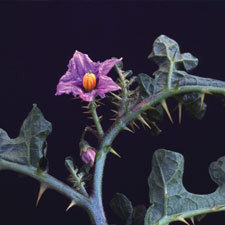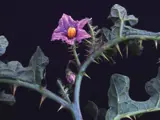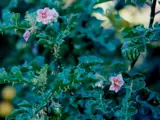 Apple of Sodom
Apple of Sodom
Common name: Apple of Sodom
Botanical name: Solanum linnaeanum
Management programme: Progressive Containment
Apple of Sodom is also known as Devil’s apple and originates from North Africa. It came to New Zealand as an ornamental plant due to the colourful flowers, hardy nature and ability to grow and establish quickly.
Even in Africa Apple of Sodom is a huge issue as animals that rely on grazing (cows, sheep) easily succumb to the toxicity of the plant.
Why is it a pest?
- It is poisonous and stock avoid it, which reduces available grazing land.
- Restricts recreational use of coastal areas.
- Seeds have a long life and build up in the soil.
- Seeds can easily be spread by birds, water, soil movement, machinery, and stock.
Where is it found?
There are just a few sites known to be in western and eastern Bay of Plenty. There are currently no known sites in Rotorua.
Apple of Sodom prefers poor pasture and scrub margins. At risk areas include grazing land, coastal areas, and scrub margins.
What does it look like?
- Spreading, woody, spiny, perennial shrub up to 2m tall.
- Long yellow spines and hairs scattered along the stems.
- Leaves are 90mm long, lobed, dark green, downy on the underside and have spines on the veins.
- Flowers are 25-35mm in diameter and mauve or violet. Flowering occurs in spring.
- The fruit is a toxic, round, mottled green and white berry up to 30mm in diameter that turns yellow when mature. Fruiting occurs in summer and does actually look like a small golden apple.
What are the rules?
Progressive Containment
Progressive Containment species are pests which the Council aims to prevent from spreading, reduce the distribution of, or eradicate within parts of the region over time.
How do you get rid of it?
Don’t attempt to control yourself. Let us know if you think you have seen Apple of Sodom or have it on your property. If you can, take a photo, note its location and send the details through by emailing stop.pests@boprc.govt.nz or alternatively call 0800 884 880.
Images


